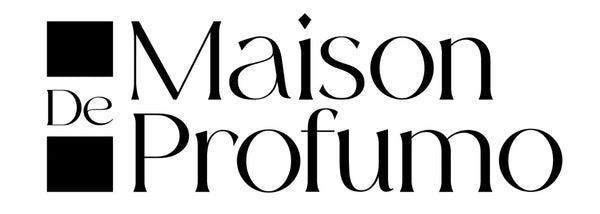"The Rich History and Unique Ingredients of Oriental and Arabian Perfumes"
Introduction
Oriental and Arabian perfumes are renowned for their rich, exotic, and sensual aromas. These fragrances often evoke a sense of mystery and opulence, rooted in centuries-old traditions and cultures. This article delves into the intricate relationship between Oriental and Arabian perfumes, exploring their historical origins, key ingredients, distinctive characteristics, and their influence on modern perfumery.
Analyzing Oriental and Arabian Perfumes

1. Historical Origins and Cultural Significance
Ancient Roots
-
Early Use in Civilizations:
- Ancient Egypt: Perfumes used in religious rituals and daily life.
- Mesopotamia: Early distillation techniques developed.
- Arabian Peninsula: Hub for spice and resin trade.
-
Cultural Traditions:
- Incense and perfume use in ceremonies and daily life.
- Historical texts and artifacts highlighting perfumery practices.
Medieval and Renaissance Influence
-
Islamic Golden Age:
- Advanced distillation techniques.
- Notable perfumers like Avicenna (Ibn Sina).
- Perfume trade routes connecting East and West.
-
European Renaissance:
- Influence of Arabian techniques on European perfumery.
- Introduction of exotic ingredients to European markets.
2. Key Ingredients and Their Origins
Common Ingredients in Oriental Perfumes
-
Resins and Balsams:
- Frankincense, myrrh, and benzoin.
-
Spices:
- Cinnamon, cardamom, and cloves.
-
Woods:
- Sandalwood, agarwood (oud), and cedarwood.
-
Vanilla and Amber:
- Warm and sweet base notes.
Signature Ingredients in Arabian Perfumes
-
Oud (Agarwood):
- Highly valued for its rich, woody aroma.
- Extracted from infected Aquilaria trees.
-
Rose:
- Distilled from Damask roses.
- Essential component in Arabian attars.
-
Saffron:
- Adds a warm, spicy note.
- Symbol of luxury and opulence.
-
Musk:
- Derived from natural sources or synthetically produced.
- Adds depth and sensuality.
3. Distinctive Characteristics of Oriental and Arabian Perfumes
Oriental Perfumes
-
Aromatic Profile:
- Warm, spicy, and resinous.
- Rich base notes with complex layers.
-
Popular Fragrance Families:
- Oriental Floral: Combines floral and spicy notes.
- Oriental Woody: Features prominent woody accords.
- Soft Oriental: Includes vanilla and amber for softness.
Arabian Perfumes
-
Aromatic Profile:
- Intensely rich, opulent, and exotic.
- Strong base notes with a lingering presence.
-
Traditional Forms:
- Attar: Concentrated perfume oil.
- Bakhoor: Incense chips used for fragrance.
4. Influence on Modern Perfumery
Contemporary Trends
-
Niche Perfumery:
- Growing popularity of niche fragrances.
- Use of exotic ingredients and unique blends.
-
Fusion of East and West:
- Western brands incorporating Oriental and Arabian elements.
- Hybrid fragrances combining traditional and modern techniques.
Notable Modern Fragrances
-
Tom Ford's "Tobacco Oud":
- Blend of oud, tobacco, and spices.
-
Amouage's "Interlude Man":
- Rich mix of oud, frankincense, and spices.
-
Maison Francis Kurkdjian's "Oud Satin Mood":
- Luxurious combination of oud, rose, and vanilla.
Detailed Analysis of Oriental and Arabian Perfumes
Historical Context
Oriental and Arabian perfumes have a rich and intertwined history that spans thousands of years. The origins of these fragrances can be traced back to ancient civilizations where perfumes played a crucial role in daily life and religious practices. In ancient Egypt, perfumes were not only used for personal adornment but also in sacred rituals. The Mesopotamians are credited with developing early distillation techniques, laying the foundation for modern perfumery.
During the Islamic Golden Age, significant advancements in perfumery were made. The Arabian Peninsula became a hub for the trade of spices, resins, and precious oils. Pioneers like Avicenna (Ibn Sina) perfected the distillation process, making it possible to extract pure essential oils from flowers and plants. These techniques eventually influenced European perfumery during the Renaissance, introducing exotic ingredients and sophisticated methods to the West.
Key Ingredients
The ingredients used in Oriental and Arabian perfumes are what set them apart from other fragrance families. These ingredients are often sourced from specific regions and hold cultural and historical significance.
Oriental Ingredients
Oriental perfumes are characterized by their warm, spicy, and resinous notes. Key ingredients include:
- Frankincense and Myrrh: Resins with a rich, balsamic aroma.
- Sandalwood: A creamy, woody note that adds depth.
- Cinnamon and Cardamom: Spices that provide warmth and complexity.
- Vanilla and Amber: Sweet, resinous notes that form the base of many Oriental perfumes.
Arabian Ingredients
Arabian perfumes often feature ingredients that are deeply rooted in the region’s culture and history:
- Oud (Agarwood): Known for its complex, woody scent, oud is one of the most prized ingredients in Arabian perfumery.
- Rose: Particularly Damask rose, distilled to produce a rich, floral aroma.
- Saffron: Adds a unique, spicy note that symbolizes luxury.
- Musk: Provides a sensual and deep base note, either naturally derived or synthetically produced.
Aromatic Profiles
The aromatic profiles of Oriental and Arabian perfumes are distinct yet share some commonalities due to their shared ingredients and historical connections.
Oriental Perfumes
Oriental perfumes are known for their rich, complex layers. They often start with a burst of spices or floral notes and settle into a warm, resinous base. The combination of spices, woods, and resins creates a deep and captivating scent profile.
Arabian Perfumes
Arabian perfumes are typically more intense and opulent. The use of oud and other rich ingredients results in a fragrance that is both powerful and long-lasting. These perfumes often have a strong base that lingers on the skin, making them ideal for those who prefer a bold and exotic scent.
Modern Influence
In recent years, there has been a noticeable trend towards the fusion of Eastern and Western perfumery. This has led to the creation of niche fragrances that blend traditional Oriental and Arabian ingredients with modern perfumery techniques.
Niche Perfumery
Niche perfumery has seen a rise in popularity, with many fragrance houses experimenting with exotic ingredients like oud, saffron, and frankincense. These niche fragrances often appeal to consumers looking for unique and luxurious scents that stand out from mainstream offerings.
East Meets West
Western fragrance brands are increasingly incorporating elements of Oriental and Arabian perfumery into their creations. This fusion results in hybrid fragrances that offer a new olfactory experience, combining the best of both worlds.
Notable Modern Fragrances
Several modern fragrances have successfully blended Oriental and Arabian elements to create unique and captivating scents:
- Tom Ford's "Tobacco Oud": A blend of oud, tobacco, and spices that offers a rich and smoky aroma.
- Amouage's "Interlude Man": Features a complex mix of oud, frankincense, and spices, creating a deep and intense fragrance.
- Maison Francis Kurkdjian's "Oud Satin Mood": Combines oud with rose and vanilla, resulting in a luxurious and elegant scent.
Tables and Bullet Points for Enhanced Readability
Key Ingredients in Oriental and Arabian Perfumes
| Ingredient | Source | Aroma Profile | Usage |
|---|---|---|---|
| Oud (Agarwood) | Aquilaria Trees | Rich, Woody, Complex | Base Note in Arabian Perfumes |
| Frankincense | Boswellia Trees | Balsamic, Sweet, Spicy | Base Note in Oriental Perfumes |
| Myrrh | Commiphora Trees | Warm, Resinous, Slightly Medicinal | Base Note in Oriental Perfumes |
| Rose | Damask Roses | Floral, Sweet, Rich | Heart Note in Arabian Perfumes |
| Saffron | Crocus Sativus | Spicy, Warm, Luxurious | Heart Note in Arabian Perfumes |
| Sandalwood | Santalum Trees | Creamy, Woody | Base Note in Oriental Perfumes |
| Vanilla | Vanilla Orchids | Sweet, Creamy, Warm | Base Note in Oriental Perfumes |
| Amber | Fossilized Resin | Warm, Sweet, Earthy | Base Note in Oriental Perfumes |
Characteristics of Oriental and Arabian Perfumes
-
Oriental Perfumes:
- Warm, spicy, and resinous aroma.
- Complex layers with rich base notes.
- Common ingredients: Frankincense, Myrrh, Sandalwood, Cinnamon, Vanilla, Amber.
-
Arabian Perfumes:
- Intense, opulent, and exotic scent.
- Strong, lingering base notes.
- Common ingredients: Oud, Rose, Saffron, Musk.
Conclusion
The connection between Oriental and Arabian perfumes is a testament to the rich cultural and historical heritage that these fragrances embody. From their ancient roots to their influence on modern perfumery, Oriental and Arabian perfumes continue to captivate and inspire with their exotic and opulent aromas. This comprehensive exploration highlights the distinctive characteristics and key ingredients that make these fragrances timeless and universally admired.

